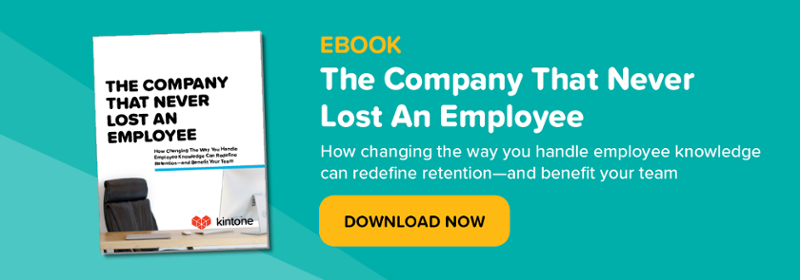We've all worked at or know of organizations where transparency around operations, decisions and information is an exception—not a built-in expectation. But how your leadership communicates information sets the tone for the rest of your organization, which has a very real impact on your culture.
A 2019 study surveying over 1,000 U.S. employees found that nearly two-thirds have considered quitting "because inefficient workplace communication interfered with their ability to do their jobs." In addition to impacting productivity, transparent communication also has a major impact on employee engagement and happiness.
The same study found that:
- 70% of employees feel overwhelmed because of broken communication methods and fragmented information
- 78% of employees surveyed said improving communication and employee engagement should be a higher priority for their current company.
The relationship between transparent communication and employee happiness might not be all that obvious, but the idea is that employees feel a stronger sense of engagement and loyalty when they feel their relationship with their teammates, managers, and leaders is one built on trust and respect. Makes sense, right? Employee happiness leads to higher productivity and ultimately, higher profitability for the organization.
Creating a Culture of Transparency: First Steps
The first step toward building a culture of transparency is making information more accessible. While some enterprise information is highly sensitive and needs to be held back for security reasons, most day-to-day information and decision-making processes can easily be made more open and available. When this isn't the case (for example, when important contextual discussions happen in private email chains or Slack channels), teams can end up with duplicate work and poor decision-making that stifles innovation and negatively impacts an organization's competitive edge—and inevitably its bottom line.
A commonly frustrating phenomenon: when someone shares a new direction for a project, but not all team members understand the "why"—without that context, new project direction or strategy comes across as a top-down directive versus a shared team goal.
Quint Studer, author of the book, Straight A Leadership: Alignment, Action, Accountability, argues that companies with cultures of openness and free-flowing information are better equipped to ride out difficult economies. Here are some other benefits that come with creating transparent enterprises:
Organizational Stability and Solid Teamwork
People and information are an enterprise's greatest assets. Transparency helps to build interpersonal trust between employees, regardless of position, especially when there are clear systems in place to communicate.
When people are enabled to ask questions in open and honest ways, it nurtures a mutual understanding and encourages more people to share and collaborate with each other.
Building a camaraderie and feeling of "we're all in this together" is especially important when an organization is going through a large change. When all employees share the same reality via transparent communication, a change initiative is much more likely to be successful.
Increased Productivity and Supported Innovation
When information and expertise is accessible, employees can take initiative to solve their own problems rather than spending time to figure out who has the information they need to do their job. It also supports people to come up with more creative solutions. Exposing organizational silos opens people up to new ideas and diverse ways of thinking across departments.
Tapping into the wealth of knowledge and resources across an organization instead of just one team creates a deeper, more connected pool of ideas for new strategies and better collaboration."
One example of this is the relationship between sales and marketing teams. Opening up the flow of information between these two departments enables improved alignment—marketing is able to iterate and improve their strategies based on the deeper data and insight the sales team learns from their day-to-day operations.
Action-Based Accountability
At Kintone and our parent company, Cybozu, Inc, in Japan, we recently completed a review of all our managers and people in leadership roles. After employees submitted their anonymous feedback, the conversation continued with managers openly posting their response about areas they'd like to improve in along with actionable steps. Putting the facts and feedback on the table, even when it's uncomfortable, closes the perception gap between leadership and employees and makes our companies a better, more enjoyable place to work at.
Related Article: Why Projects Fail: Lack of Accountability
Tools & Processes That Support Your Culture
Information technology, particularly cloud-computing platforms, make it easier than ever before to build a culture of transparency across an organization, even when your teams are distributed or remote. While there're lot of choices out there, Kintone is built for collaborative teams that need powerful, custom-built solutions.
Business users, regardless of coding skills, can transform spreadsheets and documents into live powerful business applications. Invite your team, clients, department, or entire organization to collaborate on projects. Then from desktop to mobile device, view dynamic, real-time reports and analytics, assign colleagues a new task, or create an app with all of a projects' documents in one accessible location.
These are among the thousands of ways over 15,000 organizations use Kintone to build a culture of transparency, like American Electric's Director of Engineering Rehan Siddiqui.
Our team is more transparent, more accountable and more empowered thanks to Kintone," said Siddiqui.
Want to learn more about improving your company culture?
Get started with these other resources from Kintone. Learn how
[Article] How to Improve Your Company Culture Through Conflict
[Webinar] How to Improve Team Culture with Collaborative Problem-Solving
[Article] Technology & Culture: Why Your Tools Are More Important Than Ever
About the Author
Euna is a Senior Content Specialist at Kintone. She holds a BA in English from the University of Michigan and has a thing for words, food, and travel.




![[Free Webinar] How To Improve Collaborative Problem-Solving](https://no-cache.hubspot.com/cta/default/1857320/d55aa01a-285f-4703-bb1a-36fe67c7d6c3.png)







